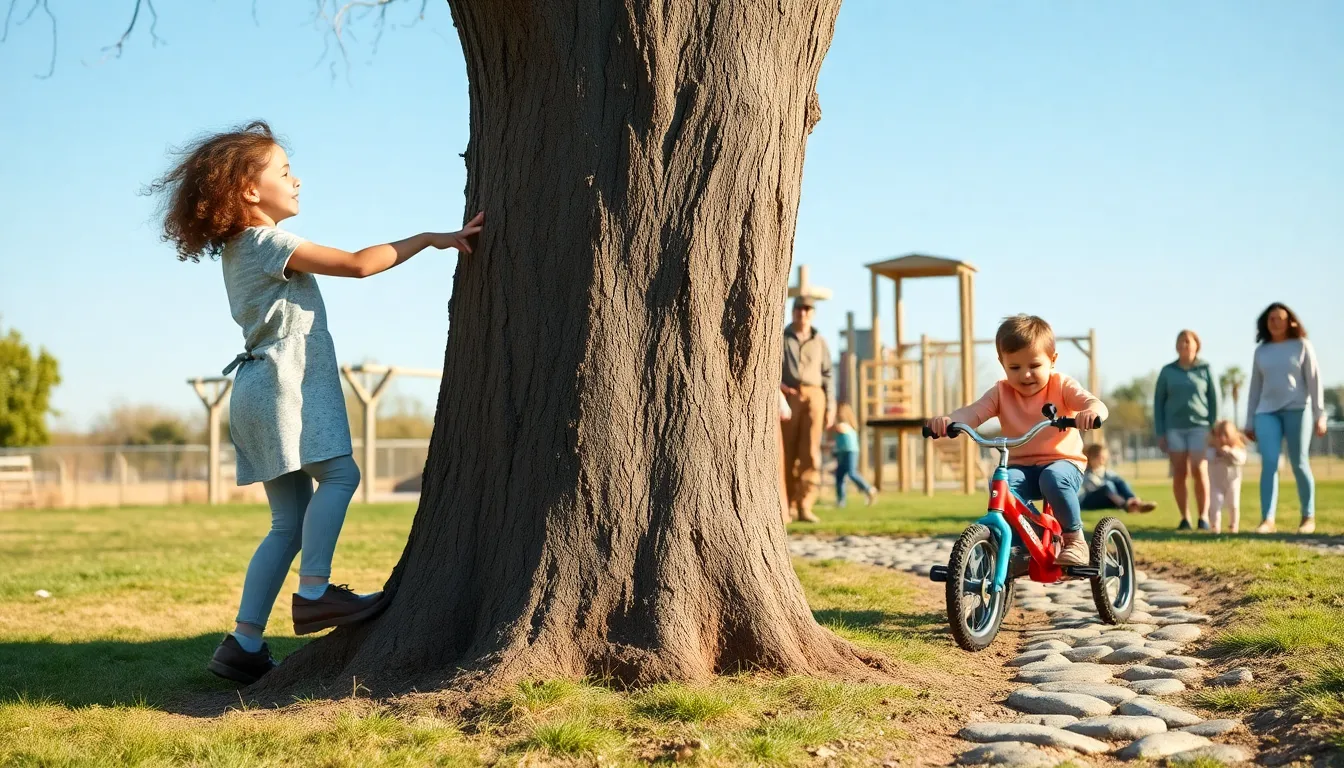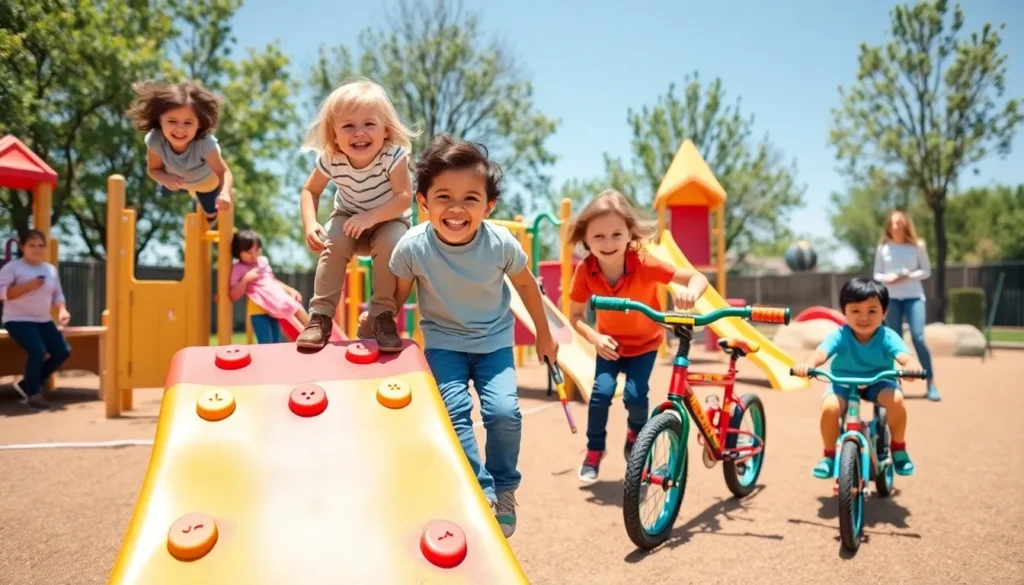When it comes to childhood, it’s often said that the best playground is one that keeps little feet running, hearts racing, and maybe even a scraped knee or two. While the instinct might be to shield children from every potential hazard, embracing risky play has profound benefits for development. Think of it as teaching kids the art of risk management in a world that often feels bubble-wrapped. In this text, we jump into the concept of risky play, exploring its definitions, benefits, and how we can encourage it in safe ways. Who knew danger could be a playground for life skills?
Table of Contents
ToggleUnderstanding Risky Play

Defining Risky Play
Risky play refers to activities that allow children to explore challenges that require a degree of risk-taking to enhance their physical, social, and emotional development. This could be as simple as climbing a tree, riding their bike too fast down a hill, or navigating a rocky path. These situations may appear perilous to adults, but for children, they are essential learning experiences.
The Benefits of Risky Play
Increasingly, studies are showing that risky play leads to numerous developmental benefits. For starters, it fosters independence. When children engage in risky situations, they learn about their limits and boundaries. This exploration enhances their self-confidence and decision-making skills. Also, these activities aid in developing physical skills, risk assessment, and social negotiation. Overall, while it may sound counterintuitive, a little danger can help kids grow stronger, more resilient, and ready to face the world.
Types of Risky Play
Physical Risks
Physical risks involve climbing, jumping, or engaging in high-energy play. These challenges can bolster a child’s balance and coordination. For example, think of a child scaling a playground structure or racing their friends down a slide. Such activities promote muscular growth and agility, critical components of early childhood development.
Social Risks
Social risks pertain to scenarios where children must navigate complex social interactions. This could involve playing games with new friends, negotiating rules, or resolving conflicts. These experiences teach negotiation skills, empathy, and resilience. Encountering social challenges helps them learn how to communicate effectively and handle emotions when things don’t go their way.
Emotional Risks
Emotional risks take the form of trying something new. Whether it’s speaking in front of a group or venturing into unfamiliar territory, the emotional stakes can be high. Such experiences contribute to self-regulation and coping strategies. Children who engage in emotionally risky play tend to feel more secure in their abilities to navigate challenges as they grow.
Encouraging Risky Play in Safe Environments
Creating a Supportive Atmosphere
Creating a supportive environment for risky play is crucial. This means allowing children the freedom to explore while being observant. Adults can foster this exploration by offering encouragement and emotional support, while also keeping potential hazards in mind. Structures or spaces that promote risk-taking should be designed thoughtfully, providing opportunities for kids to feel both safe and challenged.
Setting Boundaries and Guidelines
While it’s essential to allow children freedom, boundaries are equally important. Adults need to set clear guidelines about what constitutes acceptable risks. Teaching children how to assess risks, such as checking the stability of a climbing surface or understanding how to approach a social situation, will empower them and instill skills that last a lifetime.
Role of Educators and Caregivers
Observing and Guiding Children
Educators and caregivers play a significant role in facilitating risky play. They need to observe rather than interfere, allowing children to learn from their experiences. It’s essential to understand when to step in and when to let children navigate their challenges. This approach respects children’s ability to manage risks while ensuring their safety.
Balancing Risk and Safety
Finding the balance between risk and safety is an ongoing challenge. Caregivers should encourage growth by providing opportunities for children to engage in risky play while ensuring safety measures are in place. For instance, providing safety gear can allow a child to learn risk management without compromising their safety.
Case Studies and Examples
Successful Implementation in Educational Settings
Different educational institutions have successfully embraced risky play. For example, some preschool programs have designed outdoor classrooms that incorporate elements such as climbing structures and loose parts for building. Children are encouraged to tackle these challenges, leading to displays of creativity and independence. These programs often report not just improved physical skills among children, but enhanced teamwork and collaboration.
Community Programs and Initiatives
Community initiatives also play a crucial role in fostering an environment for risky play. Programs tailored for parents and caregivers highlight the importance of supporting children’s adventurous spirits. These educational workshops often focus on creating safe spaces where children can take calculated risks. With communities aware of the benefits, it becomes easier to advocate for spaces designed for risky play.




